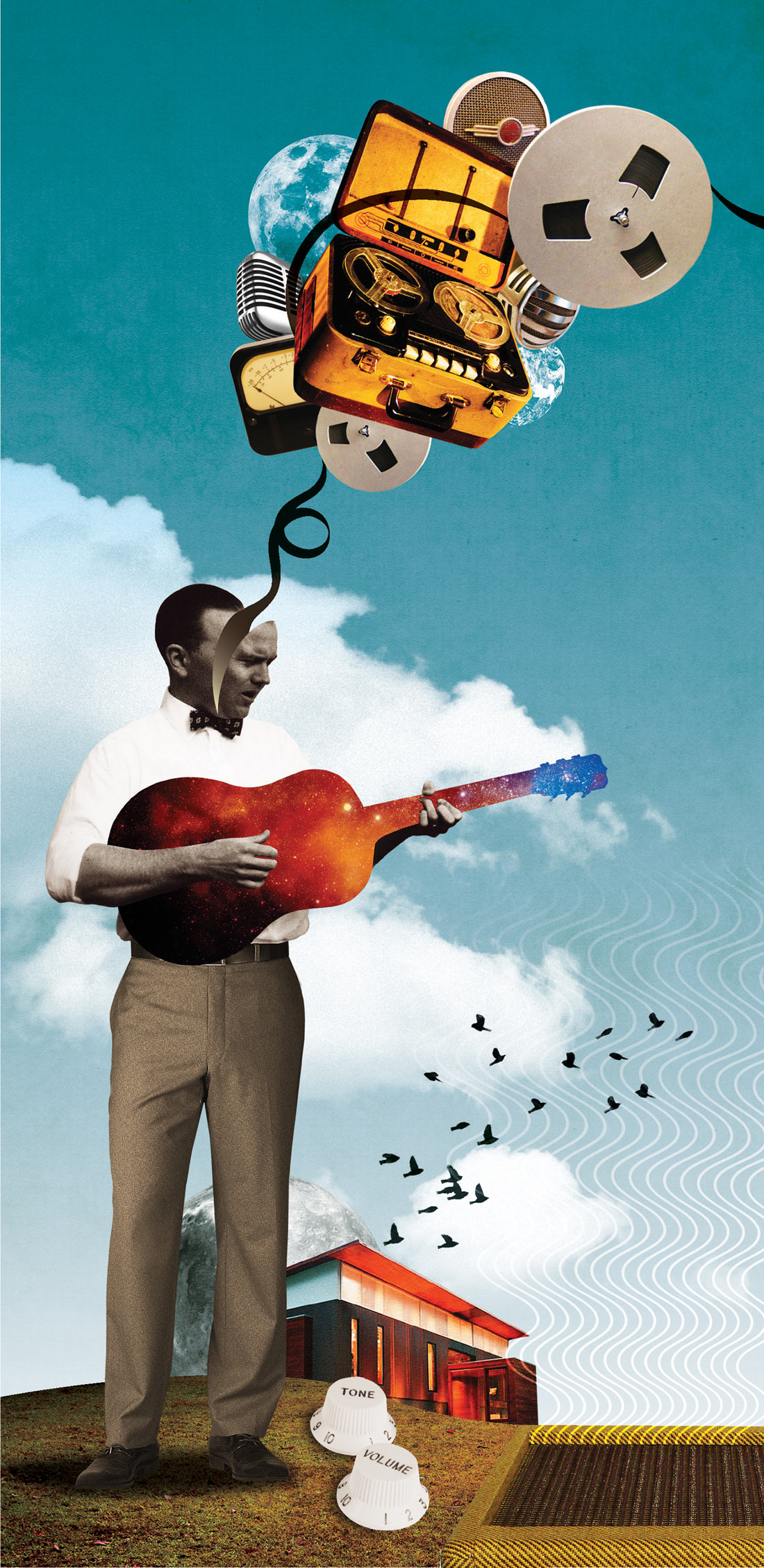Mike Castoro at Wunder Audio released his take on the Neumann U 67 early this year with the Wunder CM67, a multi- patterned tube condenser mic optimized for capturing vocals. The first thing I noticed when I opened the cardboard shipping box was the fine tweed case designed with safety in mind. No need to store everything away in a mic cabinet. I took the mic out of its wooden box, plugged in the Tuchel cable between the mic and the power supply, attached the included shockmount to my stand, and left everything alone for 30 minutes to warm up the vintage Telefunken EF 86 tube, the same one used in the U67.LiketheU67andU87,theCM67alsoemploysaK67 capsule. Only the grille in the microphone is different from the original, since Neumann owns the rights to the design. But it's pretty damn similar nevertheless.
I decided to try my usual test, a simple acoustic guitar and vocal on two tracks to see how everything sounds naked and exposed. I recorded my C10 Collings on one track using the CM67. Not a bad sound at all. Castoro told me there was a roll- off in the high end caused (on purpose) by the transformer used in the design. I'll leave the technicalities to him, but the HF bias gave a nice, rounded sound on the Collings. After recording the guitar part, I went back and recorded the vocals. Again, the smooth top gave my Waylon Jennings-like vocals warmth that I never get with, say, the U 87. On that mic, they can come off harsh - not so with the CM67.
In fact, I recorded two more vocal tracks, one with a U 87 and another with a Shure SM7 [Tape Op #36]. I preferred the CM67, then the SM7, then the U 87. I've recorded some good vocals using both the Shure and the Neumann, but it would be a lot easier to get the sound I want right out of the chute with the CM67.
After the simple acoustic test, I dug up one of my more elaborate mixes, Daniel Bull's song "Brother," and laid down a vocal to see how the CM67 cut through a larger mix. Very well it turns out. The U 87 I used in the original version worked fine, but the CM67 - again, I want to stress the warmth, the intimacy, and the lack of harshness - just sounded better. All I added was some compression and a little reverb to get the sound I wanted; no EQ needed at all.
When something's done right, it seems simple. Wunder now makes its own power supply units, and Castoro says it's the cleanest on the market. Beats me, but self noise did seem low compared to other tube mics when I cranked it. From the power supply, you can choose up to nine polar patterns. I used cardioid for the tests, but at the end played around with the mic in both omni and figure-8 patterns. I've used figure-8 with background vocals, putting one singer on each side of the mic to create high energy by having the background vocalists watch each other while they sing. It's more of a psychological approach, but you need the technology to pull it off, and the CM67 can provide it. As to omni, I'm not a big fan, likely because my room is problematic, so I prefer the directionality of cardioid. But the patterns worked fine, and since they're selected from the PSU, there's no need to fiddle with the mic.
This is the best vocal mic I've used since I used the Wunder CM7 [Tape Op #59, #77], but I prefer the CM67. If you sound like Bruce or Waylon or even Janis Joplin, I think you're going to want the CM67. If you sound like Paul or Sting or Adele, then the CM7 might be the better choice for you. Me - I like the HF roll-off in the CM67 a lot and would also use it on strummed guitars. Sure, it's pricey - the only downside to Wunder mics, I guess. But you definitely get what you pay for. Quality sound. ($4295 MSRP; www.wunderaudio.com)
-Mike Jasper <biz@deceptivesound.com>




_disp_horizontal_bw.jpg)